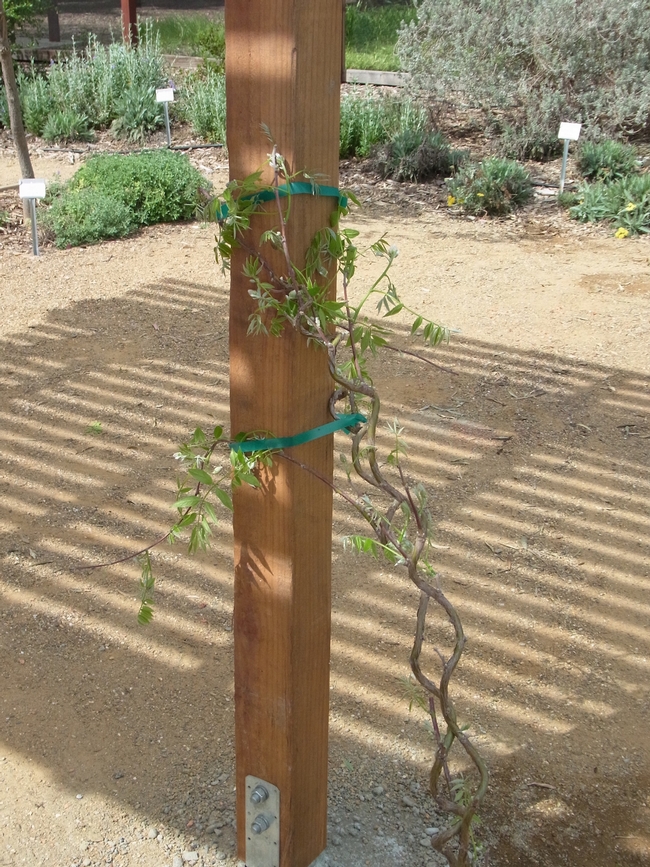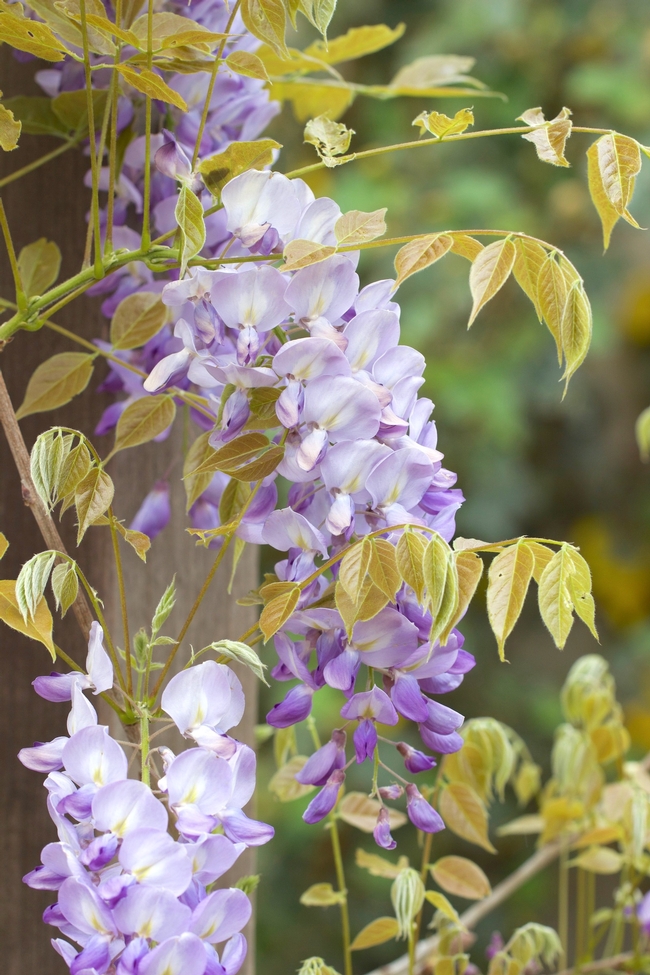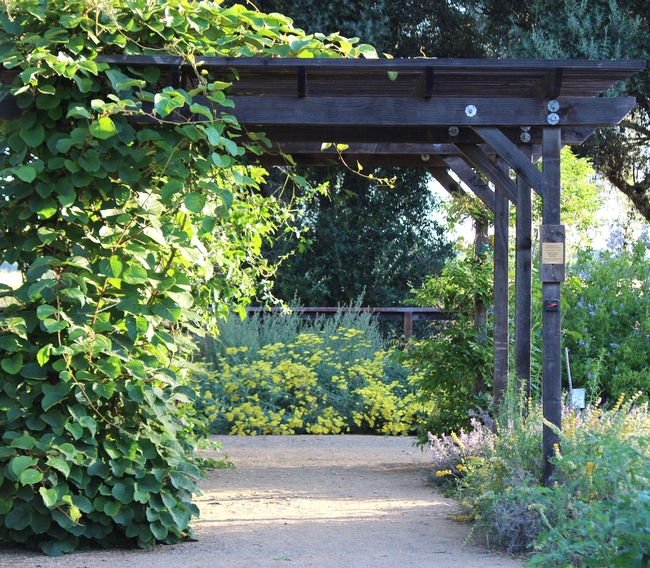
California native vines
These aren't widely available, so you'll likely need to go to a specialist nursery or plant sale to find these. These are listed alphabetically by genus, and I've indicated if it's deciduous or evergreen. These will all grow through a fence or other support and don't need to be tied.
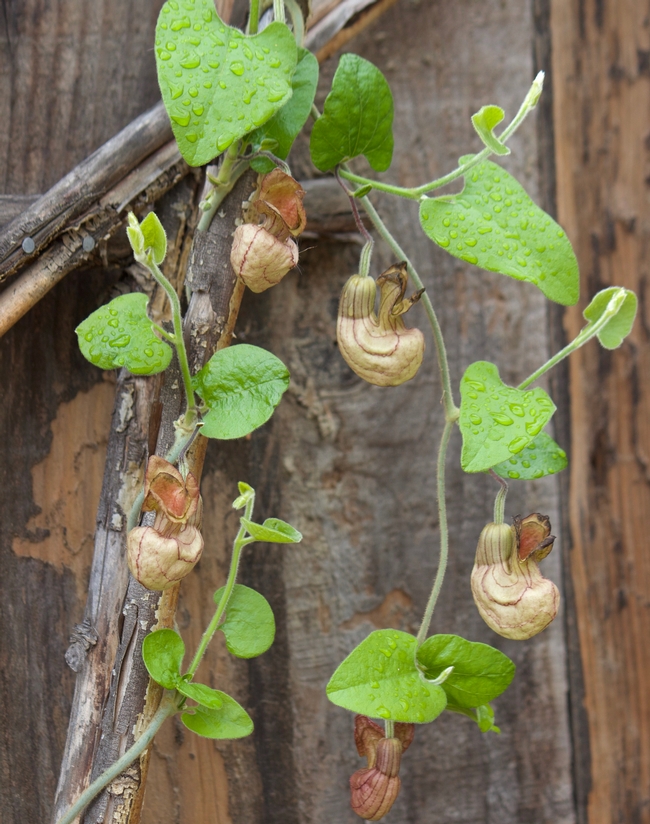
Not a bee plant, but a larval food source for the native California pipevine swallowtail butterfly. The unusual flowers are attractive to flies and appear in early spring before the leaves. Native to riparian areas in northern California and southern Oregon, it will need regular water and part shade in the garden, although it can subsist on less water but will go dormant in the summer. This plant reaches up to 15 feet and can cover a fence or grow up through a tree.
California morning glory (Calystegia purpurata ssp. purpurata). Deciduous to semi-deciduous. Sunset zones 14-24.
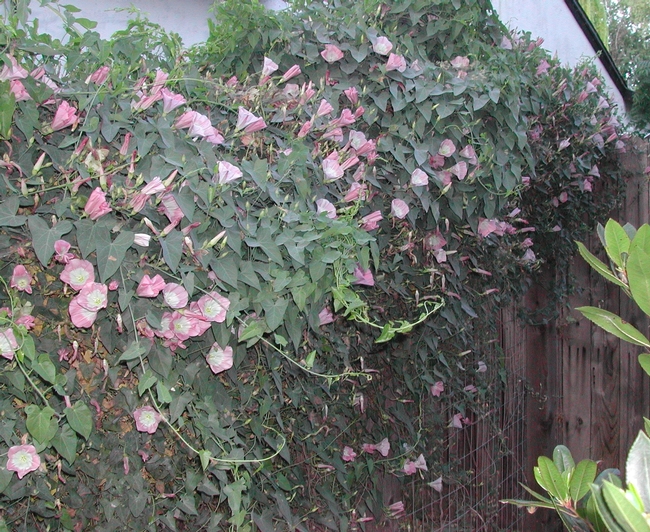
California honeysuckle (Lonicera hispidula). Evergreen. Sunset zones 7-9, 14-24.
This plant is used as either a vine or a groundcover. It differs from the more commonly sold non-native honeysuckles in that the pink and white flowers are more subtle and not fragrant. This spring-bloomer is attractive to many bees -- including honey bees, carpenter bees, and bumble bees -- and is also used by hummingbirds. Grow this low-water plant where the roots will be shaded but the foliage will be in sun. Looks best with a few deep waterings over the summer.
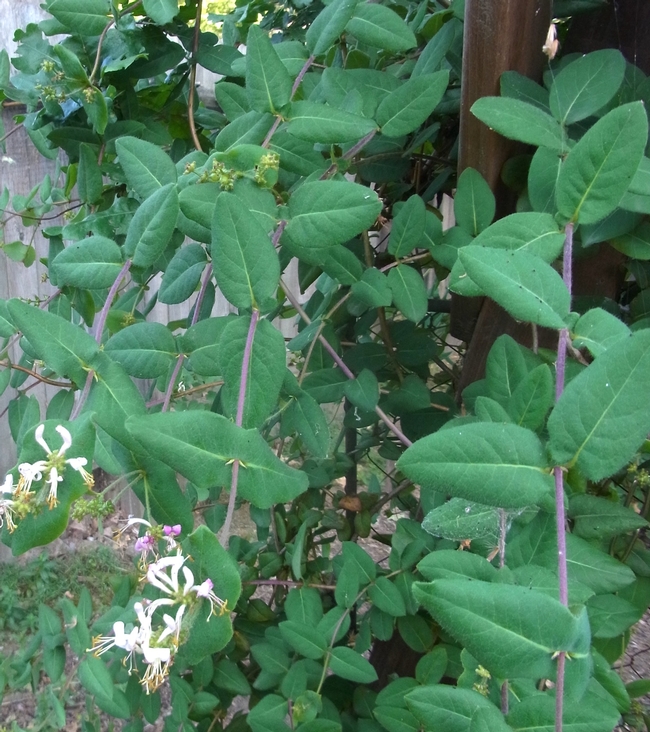
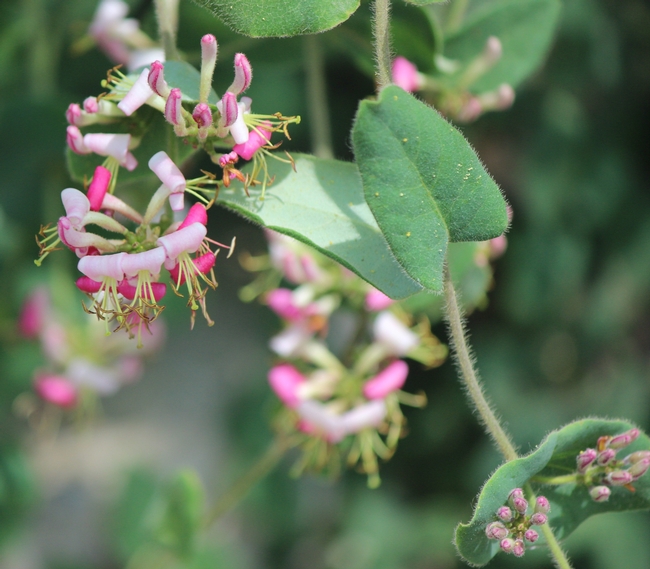

Non-native vines
These are more commonly available than the natives listed above and add additional bloom time and interest to the garden.
Purple lilac vine (Hardenbergia violacea) 'Happy Wanderer'. Evergreen. Sunset zones 8-24.
This Australian native blooms in late winter and early spring. It needs moderate water and full sun, and will need to be tied or otherwise supported as it begins to grow. Thin the stems after blooming to prevent it from becoming too tangled. The small purple flowers are attractive to honey bees.
Passion vine (Passiflora cultivars). Evergreen to semi-deciduous. Sunset zones 5-9, 12-24.
These vigorous South American natives will grow quickly to cover a fence or pergola in one season. Due to this growth habit it has become invasive in Hawaii. While the leaves can look a bit tattered by late summer, the flowers put on a spectacular show. It's the larval food source for the gulf fritillary butterfly, so it brings the colorful non-native adult butterfly to the garden. This vine will need to be tied to a sturdy structure to get it going, but once it starts it will provide fast cover. It needs regular water and full sun to light shade. There are many cultivars available with flowers in varying colors from blue to white. In addition to honey bees, we routinely see carpenter bees using this plant at the Haven.
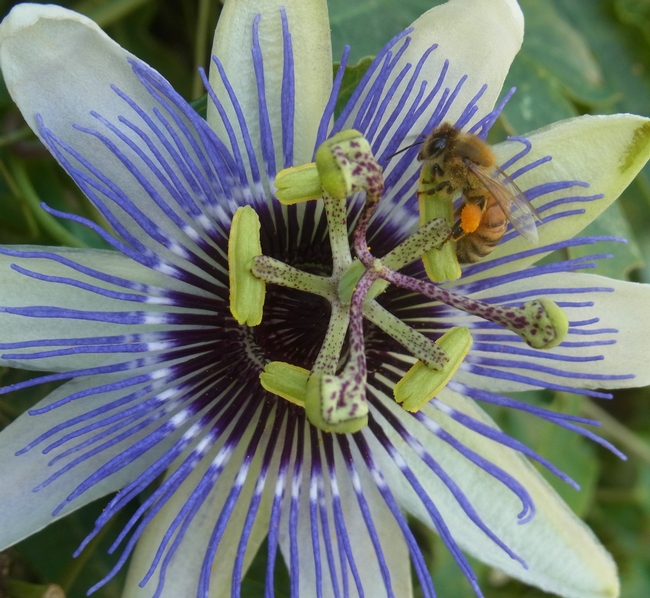
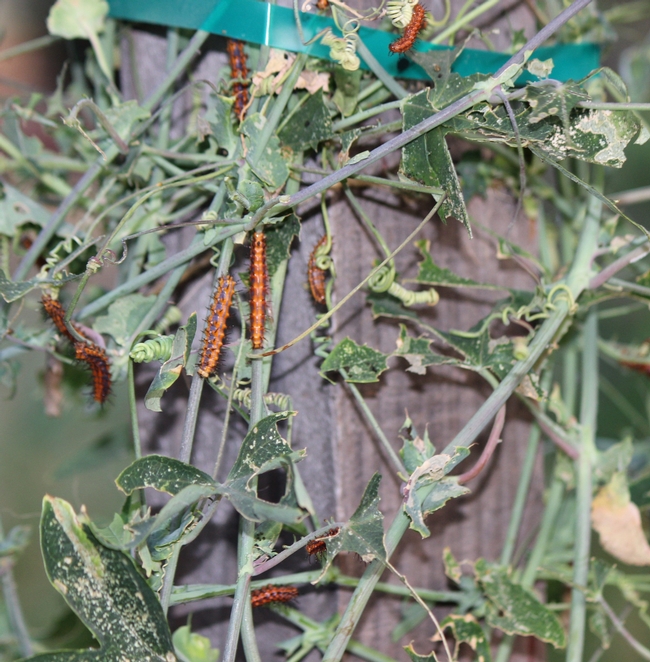
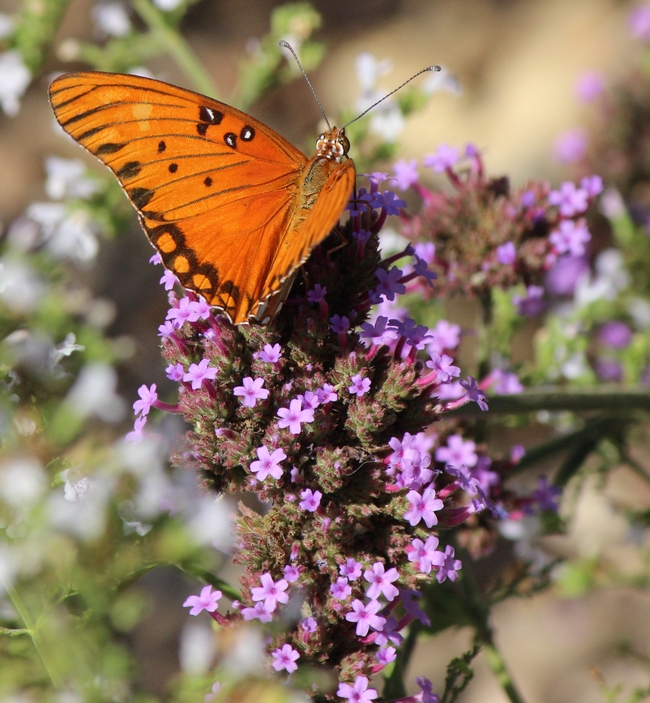
Wisteria (Wisteria sinensis). Deciduous. Sunset zones 3-24.
Next to star jasmine, this very vigorous grower might be the most commonly used vine in the Sacramento region. Just be prepared to give it a very sturdy structure! This Chinese native needs only moderate water and full sun. We grow the cultivar 'Cooke's Purple' at the Haven, as it re-blooms (although not as spectacularly) in July. It is used by larger bees like carpenter bees and bumble bees.
This plant has become invasive in the southeastern US, where the more restrained native Wisteria frutescens is a better choice.
